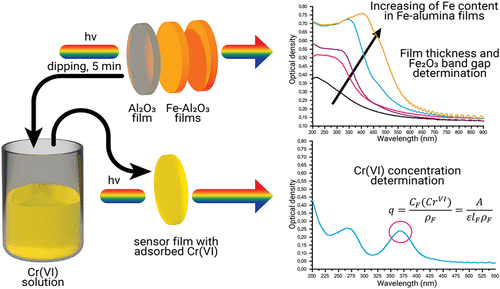Authors: Mikhaylov V.I., Krivoshapkina E.F., Trigub A.L., Stalugin V.V. , Krivoshapkin P.V.

Abstract
The problem of pollution in general and pollution of wastewater in particular is one of the main problems of our time. It is known that compounds of hexavalent chromium (Cr(VI)) are toxic even at low concentrations because of their ability to penetrate through a cell membrane and react with intracellular material. Adsorption is a promising method for wastewater treatment in terms of efficiency and cost. Thus, there is growing interest in the development of both new highly effective adsorbents for Cr(VI) removal and a new, easy-to-use, and fast method for detecting low concentrations of Cr(VI). This work proposes real-time sensor technologies based on mesoporous alumina-iron oxide films to solve both challenges. For these purposes, the microstructure, optical, and Cr(VI) adsorption properties of alumina–iron oxide composite films, as well as the valence state and local environment of iron atoms in the alumina matrix, are studied. A new method for determining the sorption capacity of film materials based on optical spectroscopy data is proposed. Low roughness, varied spectral characteristics, high Cr(VI) adsorption, easy regeneration, and reusability of films make them excellent materials to be used as adsorbents and optical sensors for Cr(VI) determination.
DOI: 10.1021/acssuschemeng.8b01598
Read Full: